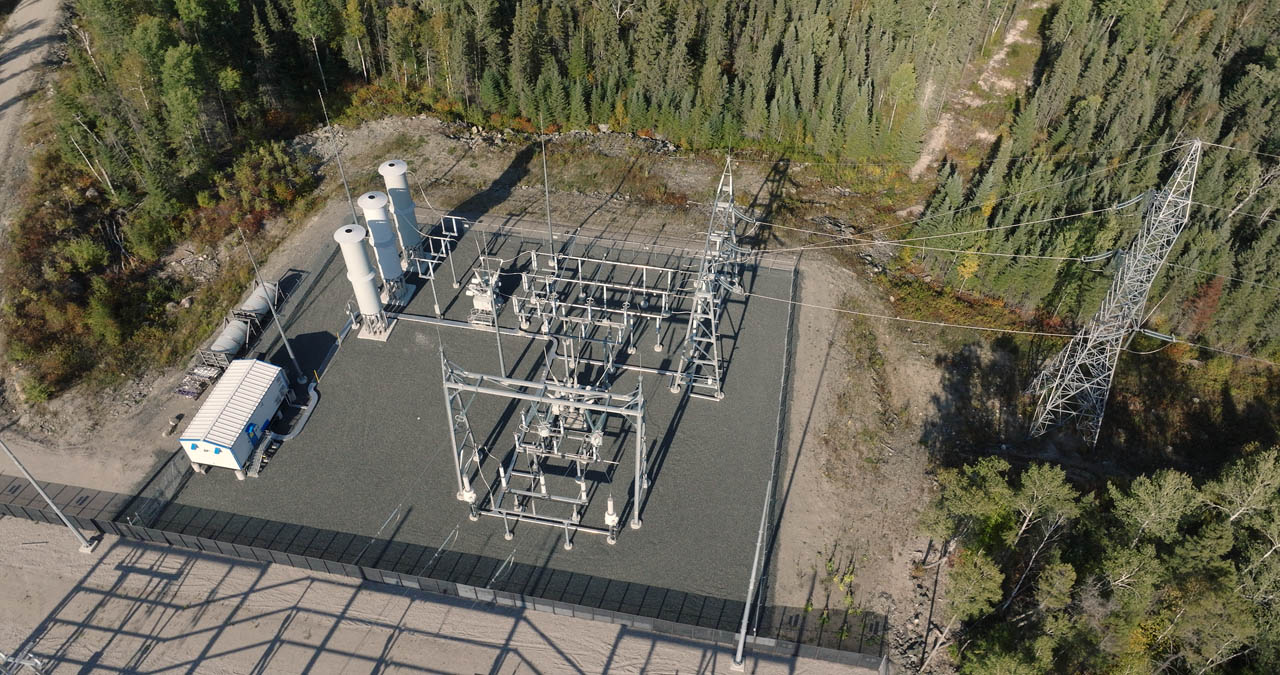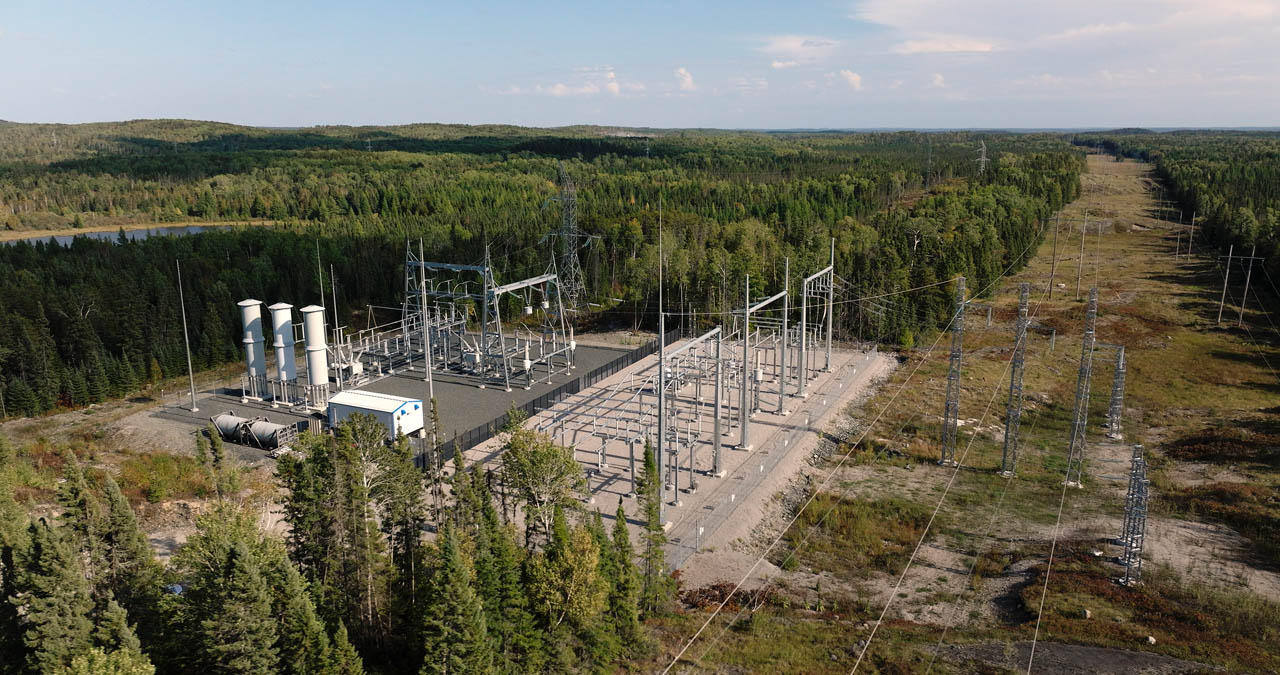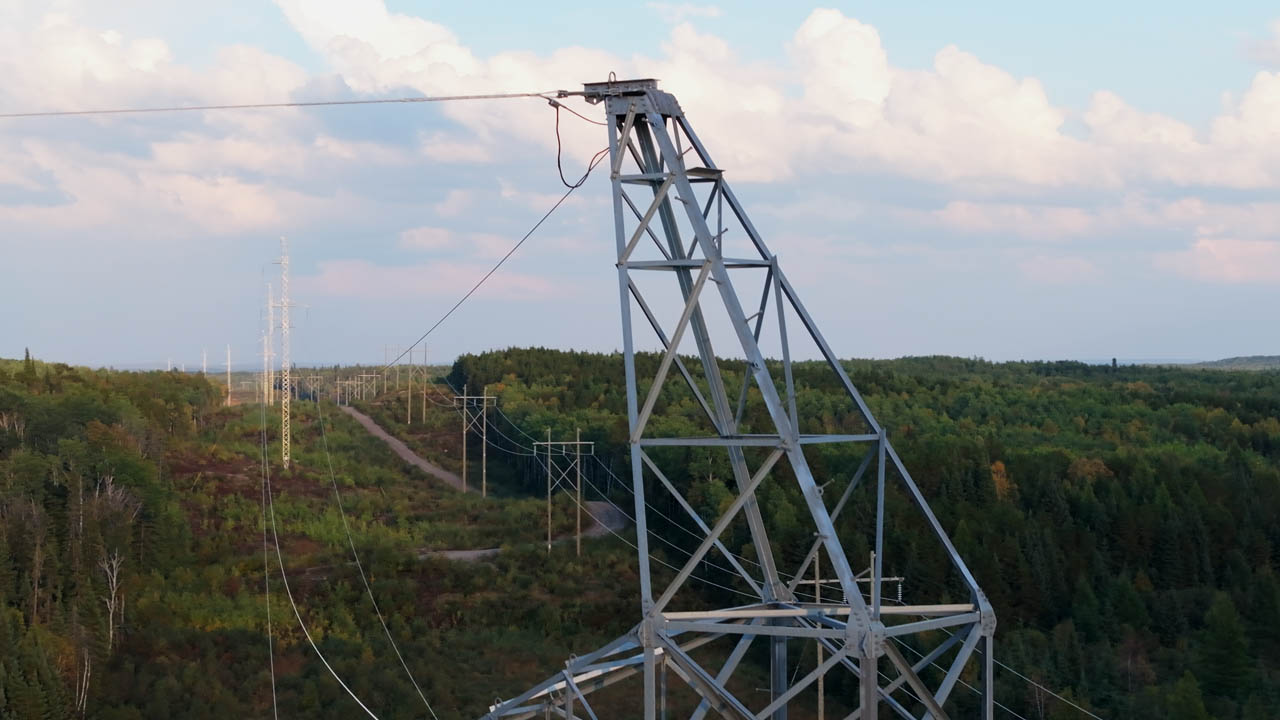Wataynikaneyap Power Transmission Project
Uplifting and empowering communities for generations to come
Annual review 2025
Project
In Indigenous teachings, decisions are often made with the next seven generations in mind. The Wataynikaneyap Power Transmission Project embodies this principle fully. At its heart, it’s about more than electricity. It’s about energy sovereignty.
“Hatch provided their professional expertise and support to Wataynikaneyap, which enabled the vision of our People to build the infrastructure that connects remote First Nations to clean, reliable power. This is a success story of one of the largest Indigenous-led projects in Canada. Miigwetch to Hatch for being our eyes and ears on this project.”
—Margaret Kenequanash, CEO, Wataynikaneyap Power
Wataynikaneyap means “line that brings light” in Anishininiimowin. Born from the vision of 24 First Nations, who partnered for the betterment of 17 communities, came the construction of 1,800-kilometer transmission lines that would power some of Canada’s most remote areas with clean, reliable energy. Acting as Owner’s Engineer, Hatch played a critical role, ensuring the success of the project.
- 1,800KM transmission lines
- 22 substations
Wataynikaneyap Power Transmission Project
Across northern Ontario in the late 1990s, the homes, schools, and businesses of more than 18,000 people were at the mercy of rolling power outages from costly, unreliable diesel generators. The Independent Electricity System Operator (IESO) estimated cost of diesel generation in Ontario’s remote First Nations at $90 million per year. But the community cost was far steeper, with unreliable power leading to school closures, food spoilage, constraints on construction of new homes and facilities, and limited access to medical care.
By 2009, the energy forecast map of Ontario’s IESO indicated that there were no plans to service their Homelands. First Nations leadership stepped in to take control of their communities’ energy futures. They gave the original Central Corridor Energy Group the mandate to pursue the planning and development of an electrical transmission line, owned by the First Nations, to connect 10 communities to the provincial electricity grid. The Wataynikaneyap Power Transmission Project is a direct and powerful realization of the vision set forth in the resolution. And it has sent ripples through the province’s energy industry, forever altering how energy infrastructure is built in the province.
Wataynikaneyap is the largest Indigenous-led electricity project in Canadian history. Its 1,800-kilometer transmission lines and 22 substations connect 15 remote First Nations communities to Ontario’s power grid and eliminate the need for the emissions-intensive diesel generators powering their communities. Ultimately, 17 communities will be connected.
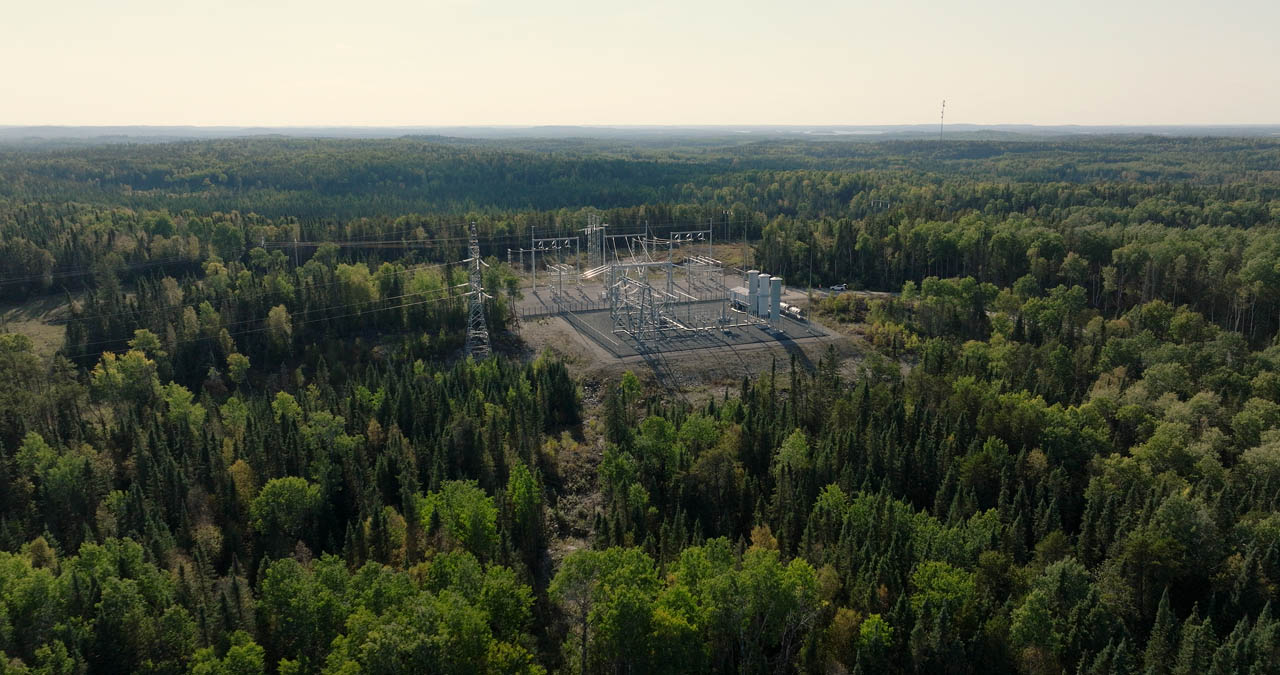
- 17 First Nations communities
In 2012, the 24 First Nations communities that originally came together negotiated a 51% ownership stake in the project, with the remaining 49% held by Fortis Inc. and other private investors. In a landmark agreement that sets a new precedent for Indigenous participation in energy infrastructure, the 24 First Nations communities have established a pathway for full ownership of the transmission line within 25 years—ensuring long-term control, equity, and economic empowerment supported by their partner.
“The Wataynikaneyap Power Project is a huge accomplishment for all 24 First Nations majority owners of the transmission system. We received our mandate from the Chiefs—bring clean, reliable power to the First Nations, and maintain ownership of any infrastructure on the Homelands. And we delivered.
The transmission system will improve quality of life and address the immediate needs of the communities.
Many parties needed to work together to make this happen. Hatch was an important part of the development and construction of the line. Miigwetch to Hatch for their expertise, support, and respect throughout.”
—Frank Mckay, Wataynikaneyap Power General Partnership Board Chair
First Nations leadership established Guiding Principles that set out expectations to ensure Indigenous protocols, rights, and ways of life were part of every aspect of the project’s requirements. At Hatch, we were honored to be chosen as Owner’s Engineer and trusted to uphold these Principles with all parties working on the project. In parallel, we supported the creation and ongoing monitoring of Indigenous participation requirements.
We worked closely with Wataynikaneyap Power to develop the strategy for successful execution of the project. This included detailed contracting and risk management plans to safely navigate complex project challenges while also achieving the project’s priority objectives in a cost-effective manner. We established technical specifications and requirements for the design and materials that considered the project’s intricate logistical hurdles. We collaborated to establish detailed construction requirements and expectations, ensuring safe execution while fully respecting First Nations' communication protocols and environmental considerations.
To manage such a large scope, elaborate change control procedures, with hundreds of pages of pricing schedules, ensured that route adjustments and other changes were cost efficient and had minimal impact on the overall schedule. We also supported Wataynikaneyap Power in defining the commercial terms and conditions to ensure risks are reasonably mitigated.
The vast expanse of this project, coupled with the inaccessibility of these remote areas, required an intricate construction strategy. More than half of the 1,800-kilometer lines and 16 of the 22 substations were only accessible during winter when communities and First Nations members could build ice roads over land, frozen rivers, and lakes. What would normally be 12 months of work was compressed into short winter periods of mere weeks. The project workforce increased from a few hundred to 1,400 workers during the winter months to maximize the work completed in such short seasonal windows. Materials planning was crucial to coordinate supply transport a year in advance of each construction season.
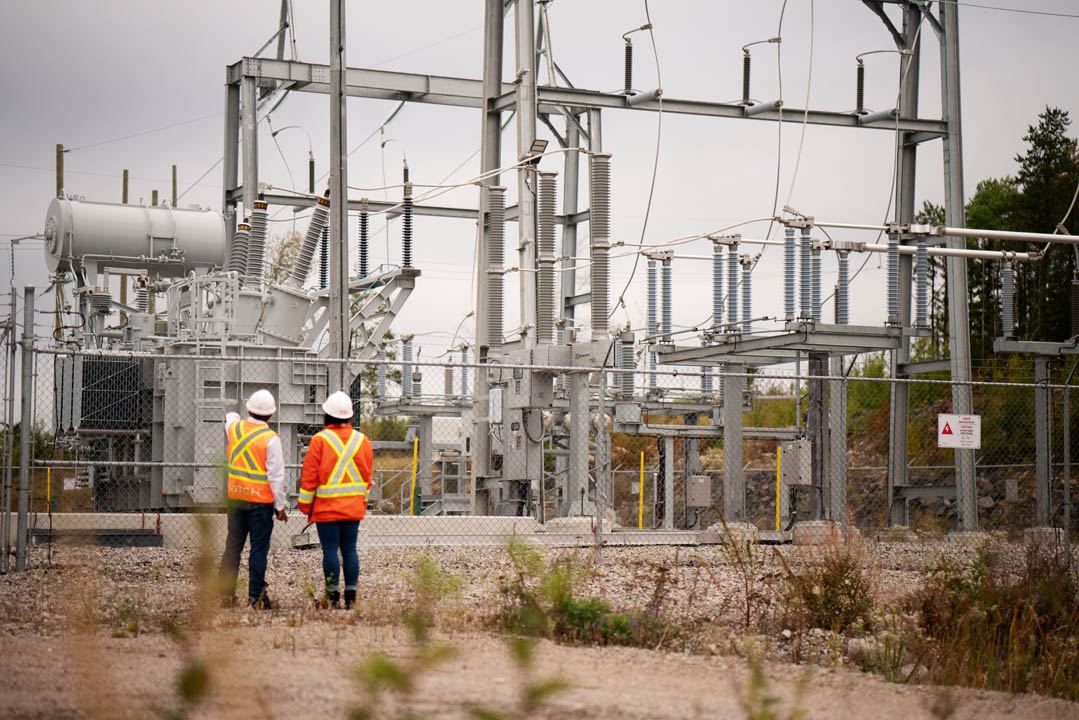
As construction commenced, the World Health Organization officially declared COVID-19 a global pandemic. Factory tests and verifications for equipment designs screeched to a halt and concerns grew over the number of workers traveling in and out of the First Nations communities that had limited medical resources.
Project leaders, First Nations representatives, public health officials, Hatch and the EPC contractor came together to create a comprehensive COVID-19 management plan—deeming the delivery of reliable power to the 17 remote communities as a critical and essential service. In response, the Hatch team created new tools and processes to enable remote testing and verification of equipment designs and provided on-the-ground support to monitor contractor compliance with the new COVID-19 management plan and protocols. The management plan itself was revised multiple times as COVID-19 evolved over multiple years.
Every kilometer of transmission lines was built to code and to community expectations. By bridging our technical expertise with the communities’ shared vision, the nearly $2-billion project, covering a largely unknown landmass nearly the size of Germany, reached completion despite COVID-19 and large forest fires.
The new transmission system eliminates an estimated 6.6 million tons of greenhouse gas emissions, the equivalent to taking 35,000 cars off the road. But more than that, the line brings new opportunities to the First Nations communities and has resulted in a new era of energy infrastructure development in Ontario. Hydro One, and other energy utilities, have made an official policy to offer First Nations a 50% equity stake in all new transmission lines valued over $100 million. And IESO, whose forecast map set Wataynikaneyap in motion in 2009, has set aside a dedicated fund for northern Ontario energy projects.
“There are moments in a career that leave a lasting imprint—not just professionally, but personally. For me, the Wataynikaneyap Power Transmission Project is one of those moments. It wasn’t just the scale of the project —it was the resilience, relationships, and shared purpose that made it truly special. Access to clean, reliable, and abundant energy will empower First Nations and create a brighter, more sustainable future for generations. Hatch played a crucial role in overcoming the unique challenges of building in remote northern terrain. Their expertise contributed to the successful completion of this project, reflecting Fortis’s values of partnership, innovation, and community empowerment.”
— Gary Smith, Executive Vice President, Operations and Technology
A tangible legacy
Lighting the way for seven generations and beyond, this is more than a power transmission project. It’s a lifeline. A symbol of what’s possible when technical excellence meets cultural respect. And a hopeful future for generations who will grow up in communities that are connected and empowered.
Explore more: Annual review 2025
- PROJECT
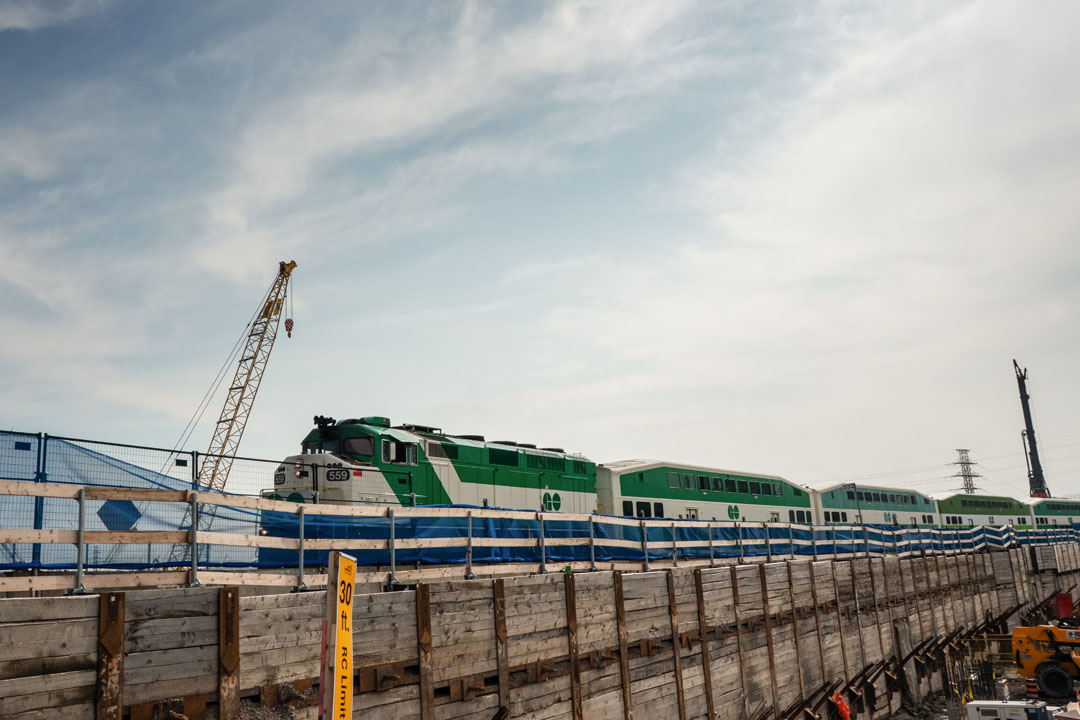
East Harbour Transit Hub
- INSIGHTS
Efficiency by design: Delivering Capital projects in today’s markets
- PROJECT
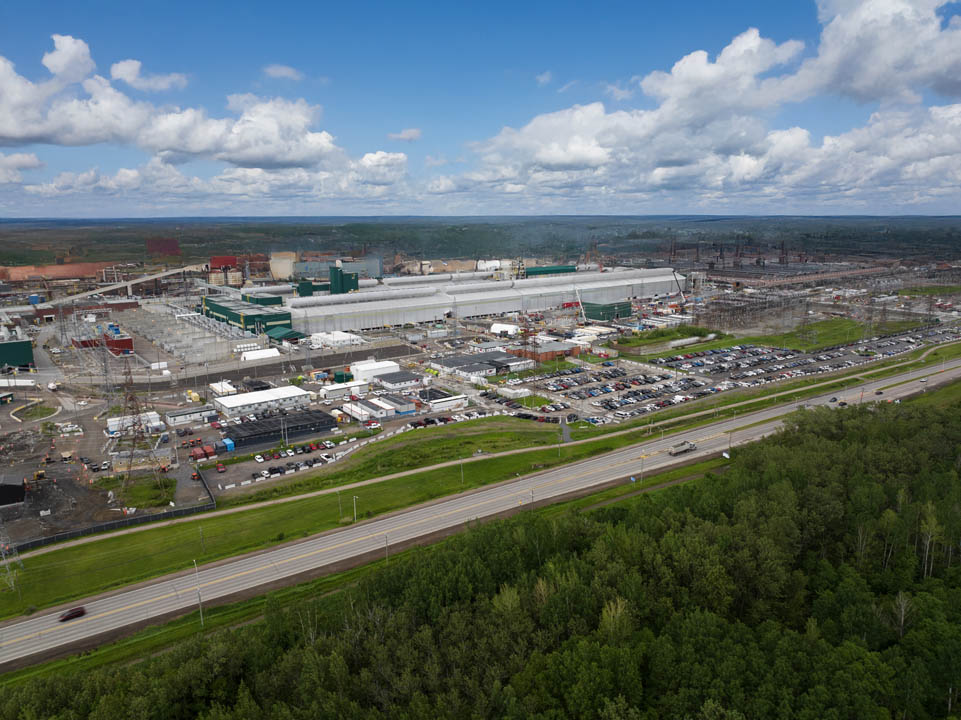
AP60 Expansion Project
- INSIGHTS
Ushering in a new era of intelligent risk-based decision making in construction
- PROJECT
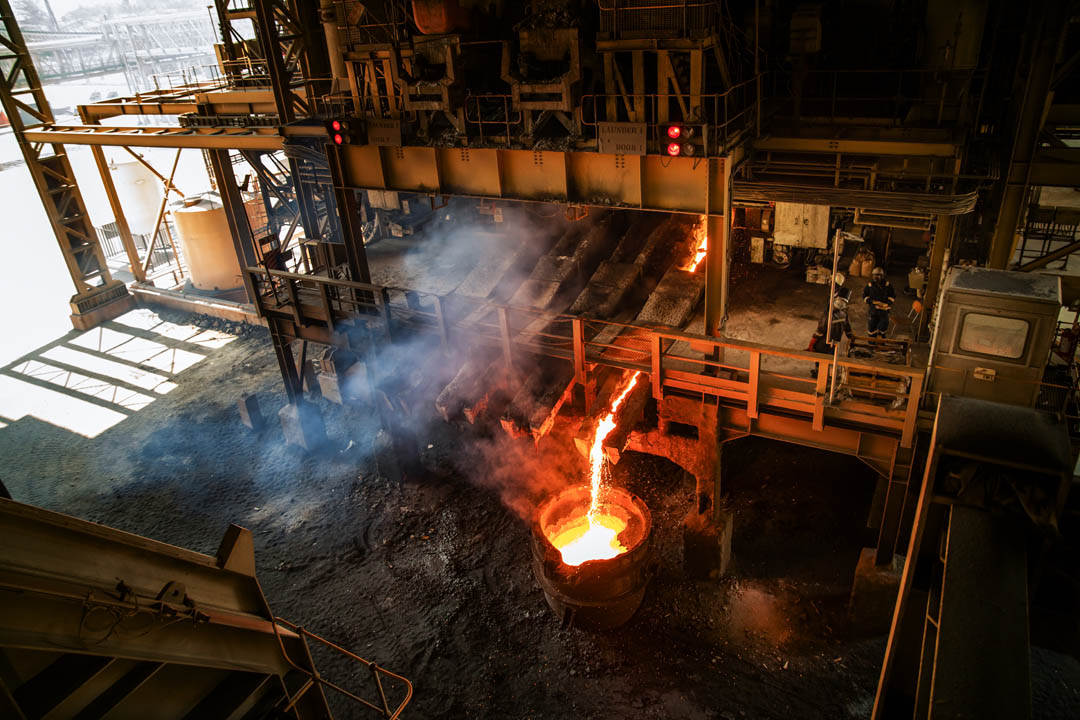
Zimplats Smelter Expansion
- INSIGHTS
Contractor delivery for successful project outcomes
- PROJECT
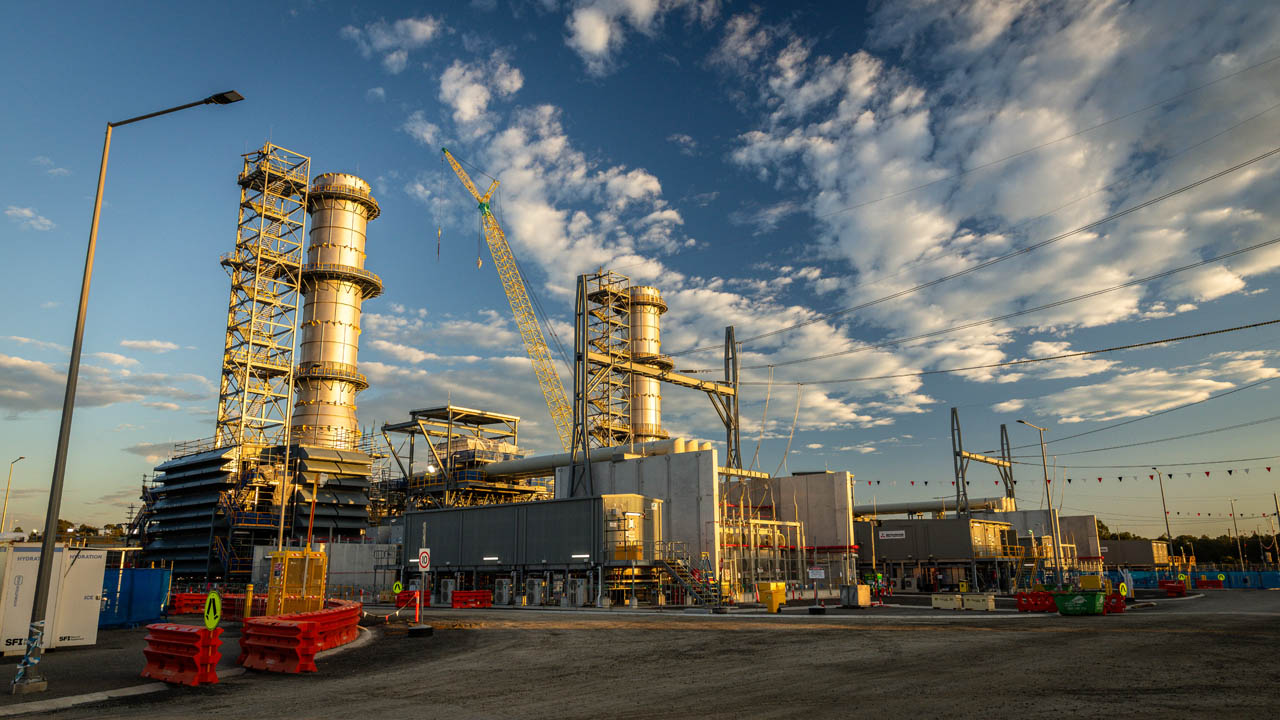
Hunter Power Project
- INSIGHTS
Are you leaving value on the table after the build?
- INSIGHTS
AI breakthrough in mineral processing unlocking millions in value
- INSIGHTS
The faster, the better? The intersection of rapid delivery and responsibility
- PROJECT

Newmont’s Yanacocha Water Transition Projects
- PROJECT

Wataynikaneyap Power Transmission Project
- PROJECT

Sound Transit’s System Expansion
